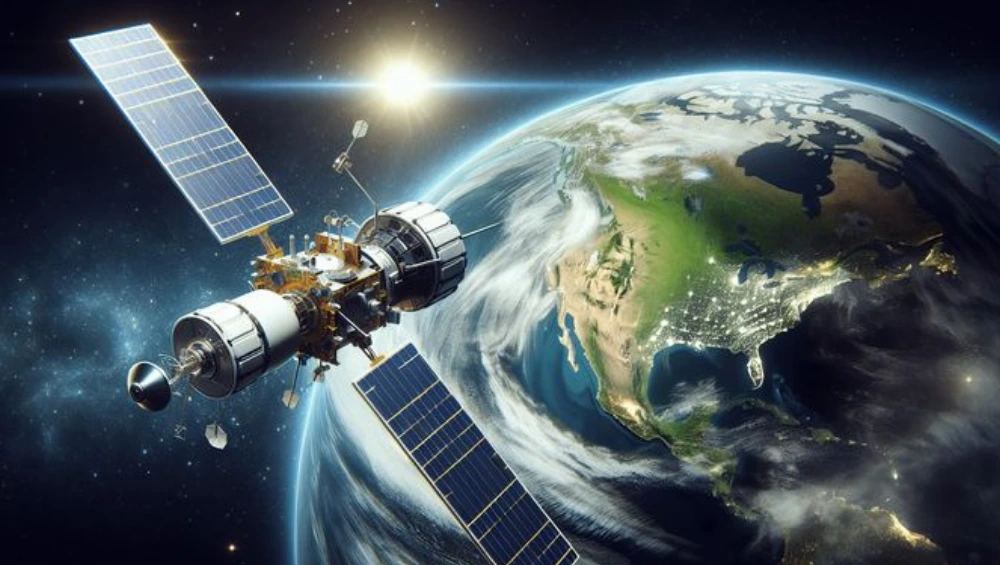Space has always fascinated humankind, especially the idea of living and working beyond Earth. One of the most iconic examples of human presence in space is the International Space Station (ISS). As it orbits hundreds of miles above our heads, many people wonder: how fast does the International Space Station travel? It’s not just a question of numbers — the speed of the ISS is crucial to its function, purpose, and survival.
In this article, we will explore in detail how fast the International Space Station travels, why it needs to maintain that speed, and what that means for the astronauts aboard and for space science in general. You’ll be amazed at how speed shapes life in space.
Understanding Orbital Velocity: Why Speed Is Everything
To understand how fast the International Space Station travels, we first need to understand the concept of orbital velocity. This is the minimum speed an object must maintain to stay in orbit around Earth without falling back due to gravity.
When a spacecraft reaches orbital velocity, it’s moving fast enough that although Earth’s gravity pulls it down, the object keeps missing Earth. It’s essentially falling around the planet instead of into it. For the ISS, this balance is achieved at a speed of approximately 17,500 miles per hour (28,000 kilometers per hour).
So, Exactly How Fast Does the International Space Station Travel?
The International Space Station travels at an average speed of about 17,500 miles per hour. This allows it to circle the Earth once every 90 minutes. That’s roughly 16 orbits in just 24 hours.
Here’s a quick breakdown:
-
Speed: 17,500 mph (28,000 km/h)
-
Orbital altitude: About 250 miles (400 km) above Earth
-
Time per orbit: 90 minutes
-
Orbits per day: Approximately 16
When asking how fast does the International Space Station travel, remember it’s not just about speed — it’s about staying in a stable, low Earth orbit. At this speed and height, the ISS experiences just the right gravitational pull to keep orbiting without drifting away or falling back.
Why Does the International Space Station Travel So Fast?
Understanding why the ISS travels so fast helps explain the physics of space travel. Earth’s gravity pulls constantly on the ISS. To resist this pull and not crash back down, the ISS must travel forward fast enough to keep missing Earth, essentially falling around it.
Think of throwing a ball. The harder you throw, the farther it goes before it hits the ground. Now imagine throwing it so hard that it falls around the entire planet — that’s what the ISS is doing. How fast does the International Space Station travel? Fast enough to stay in a constant state of freefall around the globe — and that’s 17,500 mph.
What Keeps the ISS Moving at This Speed?
Once in space, there’s very little resistance to slow objects down. There’s no air or wind like we have on Earth. That means that once the ISS is launched into orbit and accelerated to 17,500 mph, it can keep moving at that speed with very little help.
However, because the ISS orbits in low Earth orbit — where there are still tiny traces of the atmosphere — it experiences a small amount of drag. Over time, this drag can reduce its altitude and speed slightly. To counteract this, space agencies perform “reboost” maneuvers using onboard thrusters or visiting spacecraft to push the ISS back up and maintain the correct speed.
The Human Perspective: What Does 17,500 mph Feel Like?
You might wonder what it feels like to move at such high speeds. Interestingly, astronauts aboard the ISS don’t feel the motion. That’s because they’re moving with the station at the same speed, in what’s known as microgravity. This creates the sensation of weightlessness.
But there are other ways to see the speed. For instance, astronauts witness 16 sunrises and 16 sunsets each day because of how fast the ISS orbits the Earth. Looking out of the window, the Earth seems to race by underneath — a vivid reminder of just how fast the ISS is traveling.
The Role of Speed in Space Science
The speed of the ISS doesn’t just keep it in orbit — it also plays a crucial role in scientific research. How fast does the International Space Station travel? Fast enough to provide a global perspective multiple times a day, ideal for:
-
Earth observation
-
Climate monitoring
-
Studying space weather
-
Conducting biological experiments
Because it orbits Earth every 90 minutes, researchers can observe changes in weather systems, city lights, forest fires, and even the effects of pollution across different parts of the planet in real-time.
Is the ISS the Fastest Man-Made Object?
When people ask how fast does the International Space Station travel, they often wonder how it compares to other spacecraft. While 17,500 mph is fast, it’s not the fastest speed ever achieved by a man-made object.
Some interplanetary probes, like NASA’s Parker Solar Probe, have reached speeds of over 430,000 mph as they slingshot around the Sun. But those missions are short-lived and designed for deep space travel. The ISS, on the other hand, maintains its incredible speed day after day in a sustainable, controlled orbit — and it does so with people on board.
Dangers of High-Speed Orbit
Traveling at 17,500 mph brings significant risks. Even a tiny piece of space debris can become a dangerous projectile. A fleck of paint or a small bolt traveling at that speed can cause massive damage to the ISS.
That’s why ground-based teams constantly monitor for space junk and other potential threats. When needed, the ISS performs collision avoidance maneuvers, slightly adjusting its orbit to stay safe.
Life at 17,500 mph: How Speed Shapes Daily Routines
Despite its incredible velocity, life on the ISS operates on a structured 24-hour schedule based on Coordinated Universal Time (UTC). Astronauts work, exercise, conduct experiments, and sleep on a regular routine.
Still, the speed of the ISS brings constant change. Looking out the window, the view of Earth changes rapidly. One moment you’re above North America, and within minutes, you’re soaring over Europe or Asia.
It’s a powerful experience, and one that constantly reminds astronauts just how fast the International Space Station travels — even if it feels calm and still inside.
The Future of High-Speed Space Travel
As we look toward missions to the Moon, Mars, and beyond, the lessons learned from the ISS will be critical. Future spacecraft will need to travel even faster than the ISS — sometimes tens of thousands of miles per hour more — to reach their destinations.
Understanding how fast the International Space Station travels gives us a foundation for designing the next generation of human and robotic explorers.
Conclusion
So, how fast does the International Space Station travel? At approximately 17,500 miles per hour, it completes one orbit of Earth every 90 minutes, resulting in about 16 orbits a day. This speed is not just an impressive number — it’s the critical velocity that allows the ISS to stay in orbit, support ongoing science missions, and keep astronauts safe and productive.
The next time you see the ISS pass overhead in the night sky, remember: it’s racing around our planet faster than a speeding bullet, silently working to push the boundaries of science, technology, and human exploration. And now you know — not just how fast the International Space Station travels, but why that speed is so essential to its mission.








